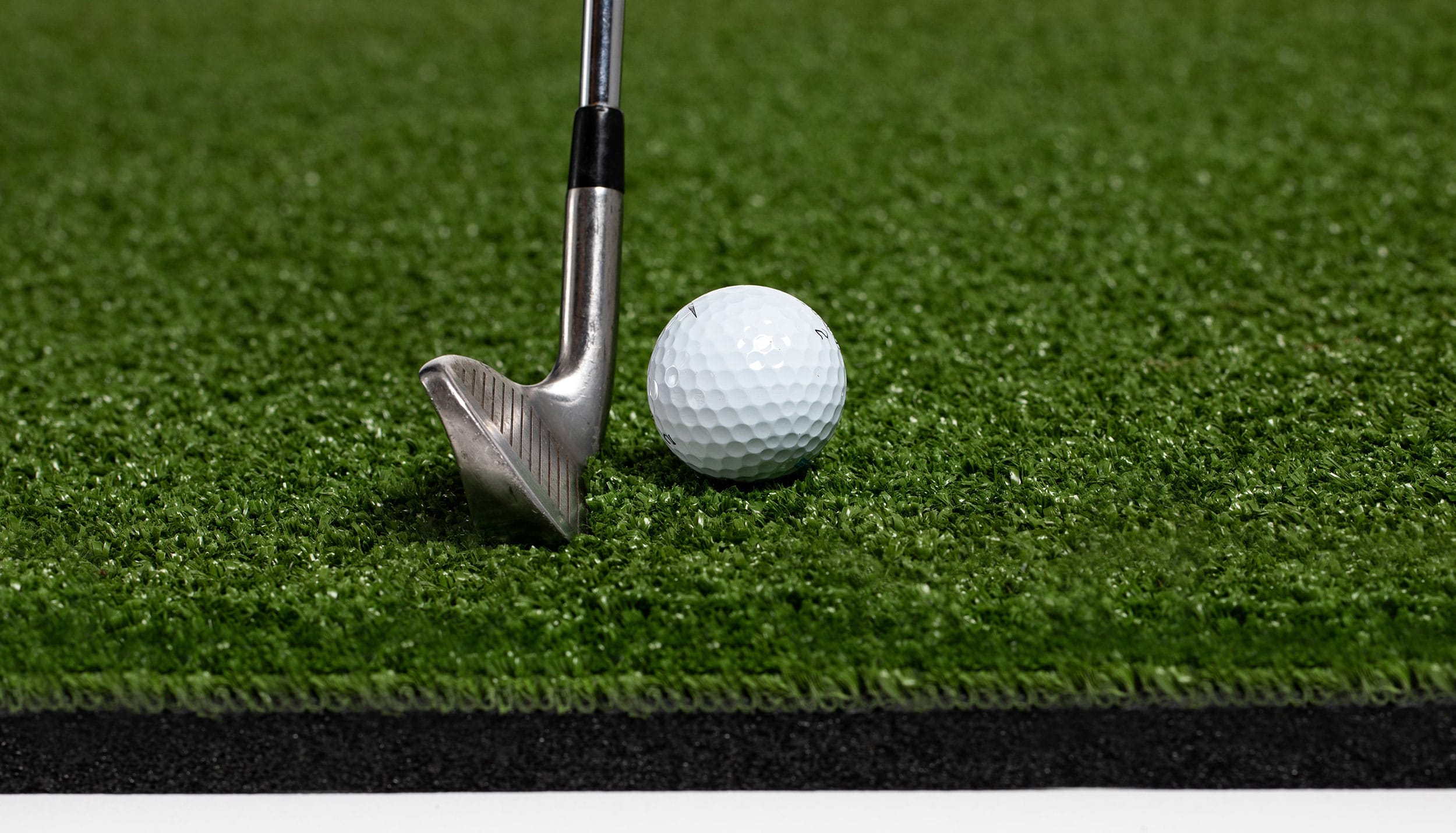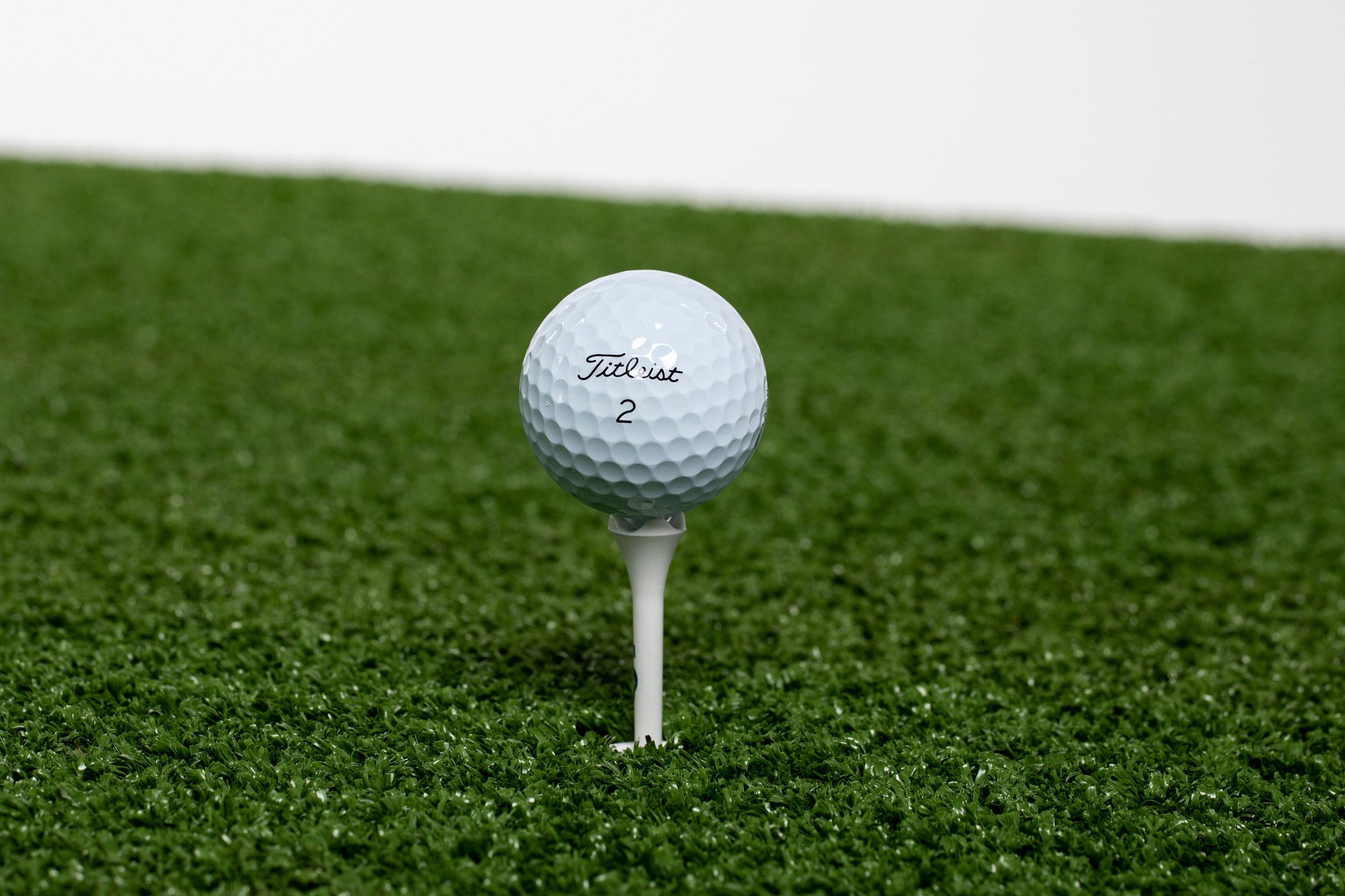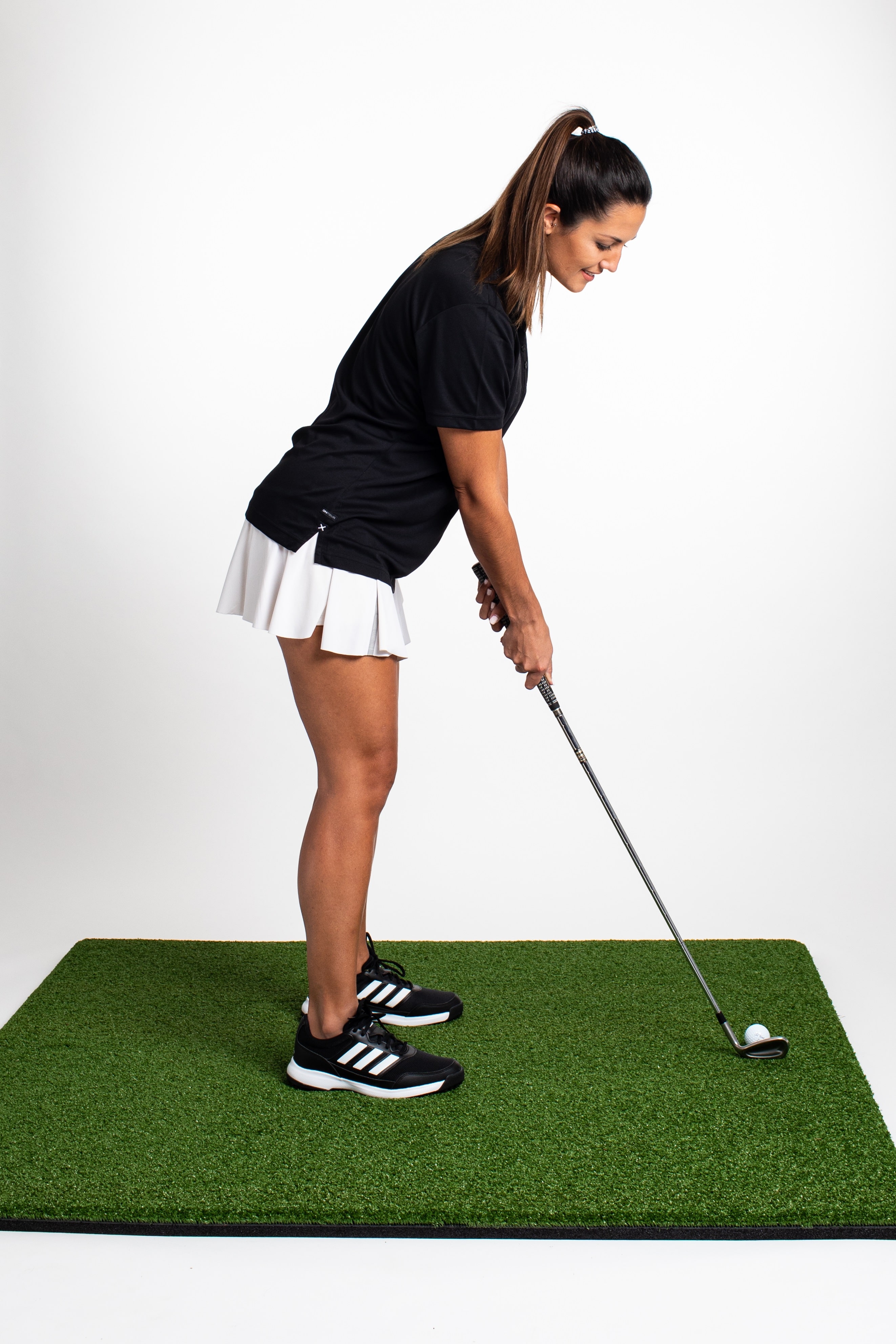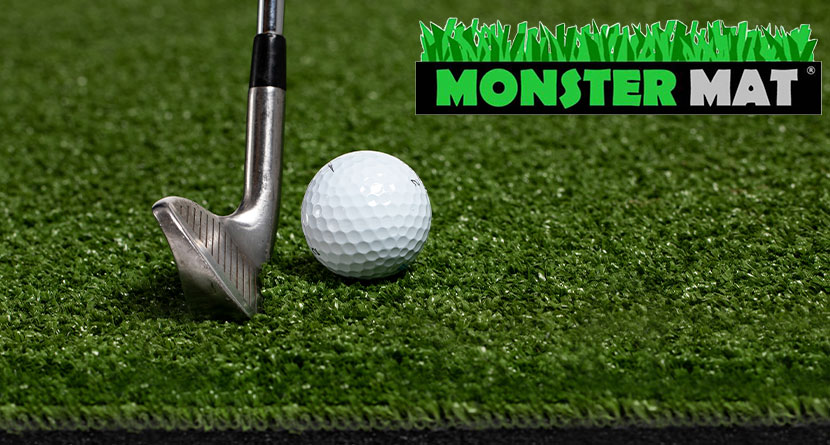As golfers, we know that practice is important if we’re trying to improve. And what goes part and parcel with this practice and game improvement is the equipment we use.
There are a million ways to practice, but once you’ve accepted your fate as a true golf sicko, you need to figure out a way to be able to practice — and play — at home. This is when the truly big decisions come into play: What am I trying to accomplish? What do I need? How much will it cost? What will my significant other allow me to get away with?
Once you’ve answered those tough questions, the build-out phase comes into play, and with it comes research and considerations. One of the most important pieces of the at-home practice facility is the hitting mat, and stay-at-home golfers would do well to consider the Monster Mat.

The Background
As soon as you dive into mat research, there’s one gigantic red flag that pops up on message boards and review sites: the commonality of wrist and elbow injuries. Golfers who consider at-home practice areas aren’t doing it in order to injure themselves and spend time away from the game, so this is about as big of a consideration as there is.
It’s practically impossible to replicate outside turf in synthetic form, so injury prevention is a major asset when it comes to picking the right mat for your practice area. We’ve all been to the old driving ranges that use thin mats sitting on concrete that can really put you out of commission if you get a little too steep every once in a while.
An important factor in all of this is, of course, price. Starting at $281 for a 3′ x 5′ hitting mat, you’re not going the beat the price with comparable products. It’s also worth considering the potential medical costs that go into hand, wrist and elbow care should you decide to go cheap on the mat.
First Impressions
The Monster Mat alleviates this injury concern as soon as the box arrives with the mat inside. Weighing around 40 lbs. and packaged in what seems like a spool of shrink wrap, the first thing that jumps out at you is the width of the mat.
Between rubber base and synthetic grass hitting area, you’re looking at around 1.5-2″ thick. Compare that to the depth of the divots you take on the course, and you’re golden. The feel of the synthetic turf is as close to a well-manicured fairway as you’re going to find. It’s odd to describe the synthetic polypropylene turf as lush, but that’s exactly what it is.

The mat, which comes rolled up like a carpet, had flattened out to playable within a day or two out in the garage, and was ready to go within a few days of arriving on the doorstep.
Performance
As soon as you set the Monster Mat down, you can feel the authenticity of the mat. It’s not like standing on a piece of wood or stone. The turf has a bit of give to it that offers a comparable feel to being out on the course or at the practice range, and as previously stated, you couldn’t possibly find a better lie.
Having locked the Monster Mat into the simulator build-out in my garage, my biggest selling point came not during the initial testing, but the morning after hitting around 100 balls with each club in the bag. To the mat’s credit, it took an hour or two of normal life — coffee, work, kids — to remember I was supposed to be taking stock of how my body recovered from hitting off of a new mat the day before.
NEW PODCAST: Is the Monster Mat the best golf mat money can buy? We talk to its founder and creator in this week’s Golf Unfiltered Podcast. @SafeplayGolf
Listen, comment, subscribe here: https://t.co/BL8TOwrOQO pic.twitter.com/4otMnlhzu1
— Adam Fonseca (@GolfUnfiltered) February 15, 2021
With the biggest red flag — injury — avoided, I was able to take more stock of the mat’s performance strengths during another garage session. The sturdy mat was fairly immobile during the entire testing period, which lasted a couple weeks. Very rarely did an adjustment or alignment need to be made, which when using a SkyTrak can mean the difference in accuracy outputs as it is dependent upon setup and alignment for proper output.
For the third time in this review, there is absolutely nothing to complain about when it comes to hitting irons. You have no excuse for mishitting a shot given the perfect lie you start with. You’re able to slide wedges through the turf for a true feel, but a poor swing is not masked as with many other mats on the market. If you hit it fat, you’ll feel like you did as opposed to skidding into and through the ball.
My favorite feature of the Monster Mat, however, was the tee for irons, fairway woods or driver. While your run-of-the-mill mats have the awkward white rubber tees that never seem to be the right height, the Monster Mat comes equipped with a special tee-holding tee, for lack of a better term. In short, instead of the hollow white rubber tee you see at driving ranges, the Monster Mat tee holds a normal wooden or plastic tee that you would use on the course, allowing you to find the perfect tee height for your game.
It’s hard to stress how much of an improvement this is for normal indoor golfers, and it makes hitting and working on your driving 100x easier.

The Conclusion
The Monster Mat is everything you want out of an at-home practice mat and then some. The durability — after about a month of steady use, you could be fooled into believing it was delivered yesterday — and usability of the mat is as good as any of the $500+ models I’ve used in the past.
From a shock-absorption standpoint, there have been no ill effects physically during the testing period, and there’s no reason to believe that wouldn’t continue with regular, year-long use.
As a golf sicko who has designs on expanded in-home offerings, the Monster Mat is at the top of the list when it comes to looking for a single square mat or even a tee-line style down the line for a bigger golf room buildout thanks to both the performance and the price.
To learn more about Monster Mat and to purchase one of your own, check out their website.





